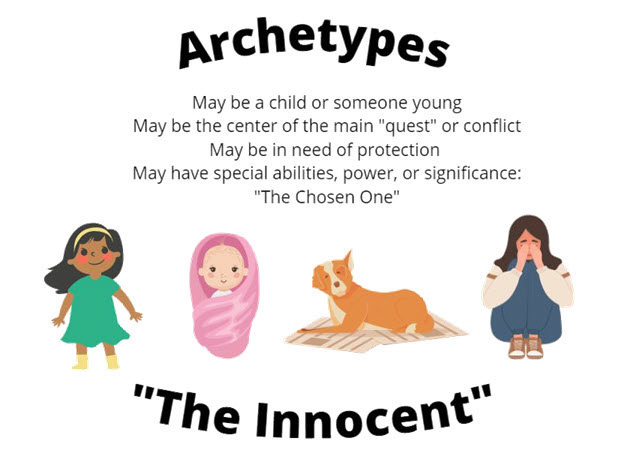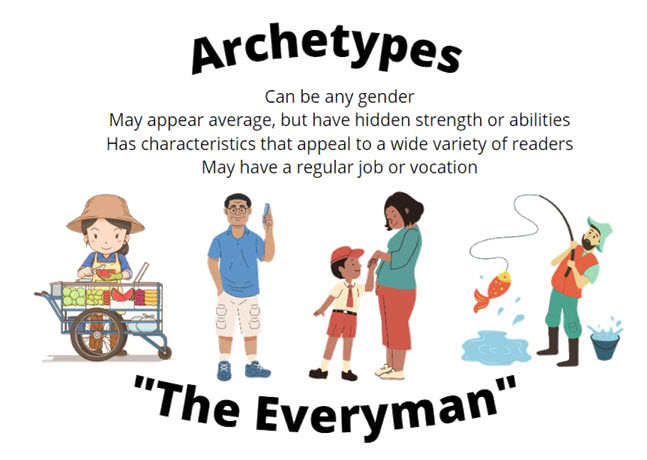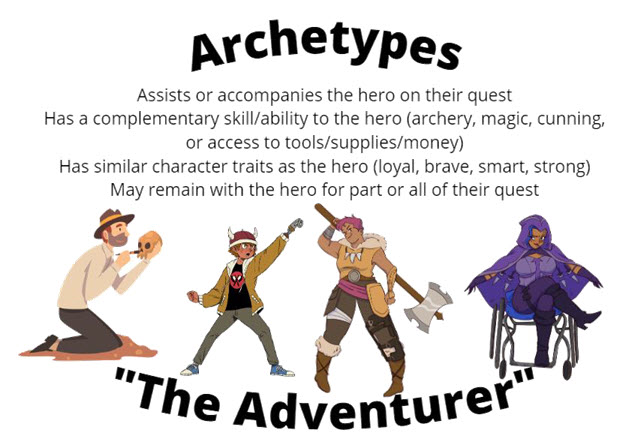Module 4: Section 3
Introduction to Literary Elements: Character Development
As you grow as a reader, you may notice that some characters have similar qualities, even across diverse types of stories! The heroes from ancient literature are not particularly different from those found in their modern counterparts. One reason for this is that authors frequently use archetypes when crafting their characters, plots, and settings.
Archetypes are a typical example of a certain person or thing. When an author uses an archetype as the basis of a character, it allows them to use a sort of writing “shorthand.” Archetypes tend to have the same characteristics, regardless of the type of genre or time period. It allows the reader to know certain things about a character without having to go into endless detail.
For example, an archetypical “hero” is usually strong: physically strong or athletic, exceptionally smart, witty, or charismatic. Heroes typically have a strong moral compass or conviction. They may have a desire to uphold the values of justice or fairness and show loyalty to their family and friends. Examples of archetypical heroes from literature are the warriors Odysseus, Hercules, Beowulf, Achilles, and Agatha Christie’s detective Hercule Poirot. Captain America would be a modern Hero: completely committed to his cause and fiercely loyal.
However, creating a character that is too like an archetype can be boring for the reader! Writers frequently create interesting characters by bending or blurring the boundaries of archetypes to create a character who doesn’t always follow the rules. They combine characteristics from multiple archetypes to create a rich, complex character who sometimes acts in ways that are unexpected.
Read the examples below to learn more about the different archetypes that you may encounter across literature. Can you see these archetypes in your favorite stories?












